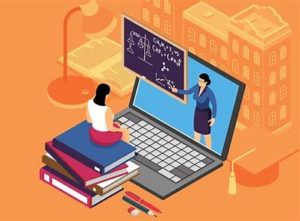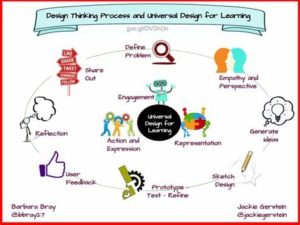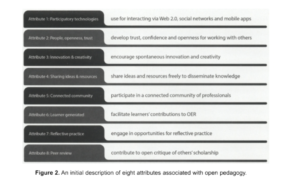
Through course study, I learned that UDL and online learning are directly different. Online education is an all-round communication between teachers and students, students and students through the Internet, which can shorten the psychological distance between teachers and students, and increase the opportunities and scope of communication between teachers and students. Online education is an education method that is compatible with traditional teaching methods such as face-to-face, correspondence and self-study, and a variety of media optimization combinations.

However, UDL is focus on students and learning instead of teachers, schools and teaching; adopt various teaching and learning methods; remove and break through various restrictions and obstacles to learning. Moreover, open education does not have too many restrictions on the age, occupation, region, and academic qualifications of the enrol-lees. Any aspiring learner with a certain cultural and knowledge base can apply for admission without taking an entrance examination.
Personally, I am now a student who left Canada and returned to study in my own country due to the covid-19 pandemic. So both online learning and UDL are relatively efficient to me. In contrast, UDL will make me feel more reasonable because I don’t have to get up in the middle of the night for online classes because of the time difference. I can choose the time I want to study within my own reasonable time frame. This has greatly improved my learning efficiency. Additionally, I am an international student, the language foundation is relatively weak, and the progress of learning will be slow, so UDL is very beneficial for me, I can control the progress of learning according to my learning ability. Finally, I think the combination of the UDL and online learning model will maximize my learning efficiency. For students, the combination of UDL and online teaching mode will give students more choices in their own learning, and also enable students to learn exactly what they want to learn.
What impressed me most is the 8 attributes of open pedagogy, which details examples based on open practices and theory, proposed by the author of the paper “Attributes of Open Pedagogy: A Model for Using Open Educational Resources”.

Hegarty, B. states ” It is impossible to discuss participatory technologies without mentioning innovation, trust, sharing, collaboration, connectedness, peer interaction and review, learner contributions, or reflective practice”(P, 10). A single model cannot be carried out smoothly, but requires the cooperation and cooperation of multiple parties to be effective. I am very grateful that this lesson allowed me to learn a lot of new knowledge about online teaching. In the third group assignment, I also learned how to effectively communicate with group members through the Internet.
Reference
Hegarty, B. (2015). Attributes of Open Pedagogy: A Model for Using Open Educational Resources. Educational Technology, 55(4), 3-13.
Leave a Reply